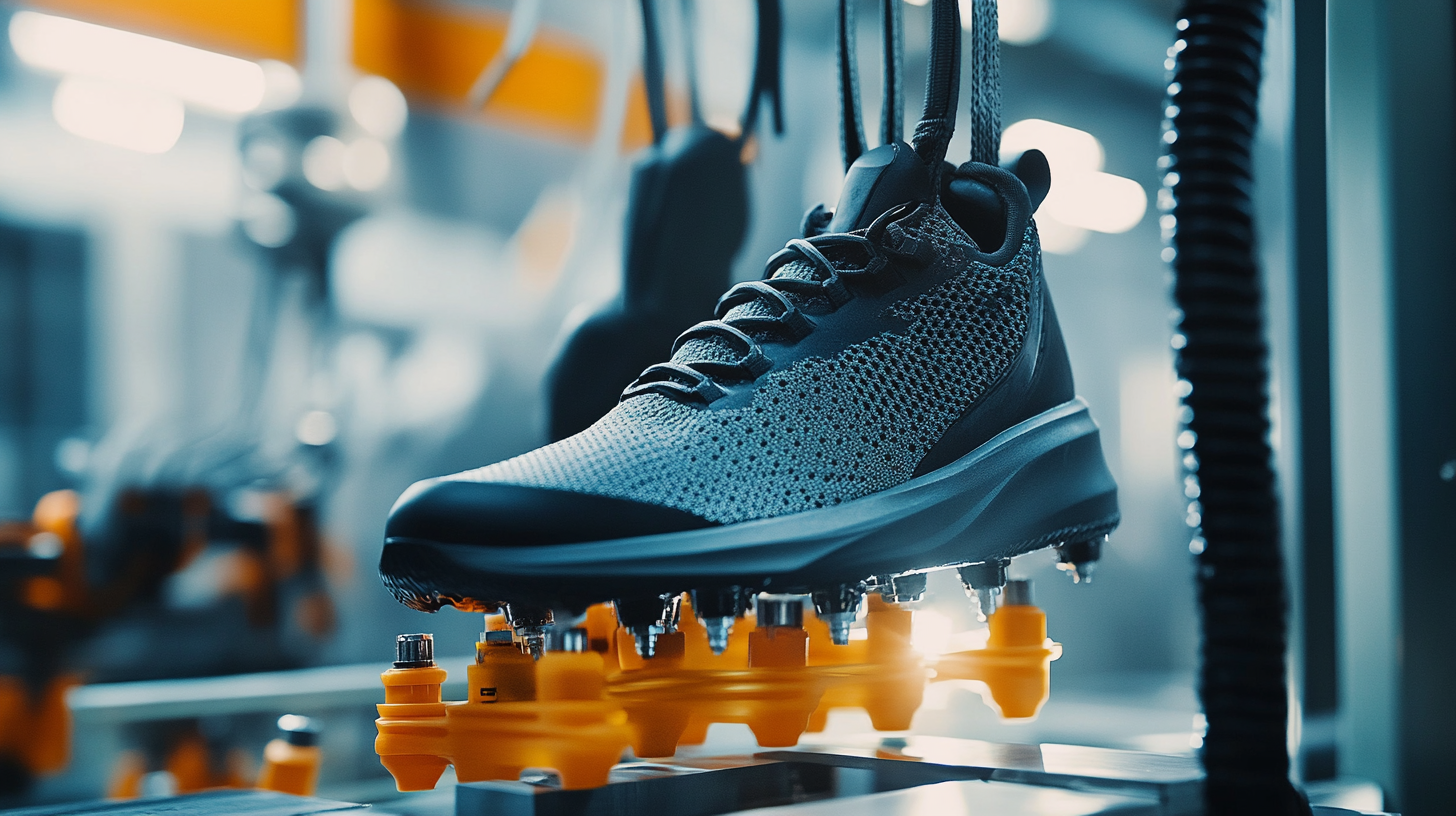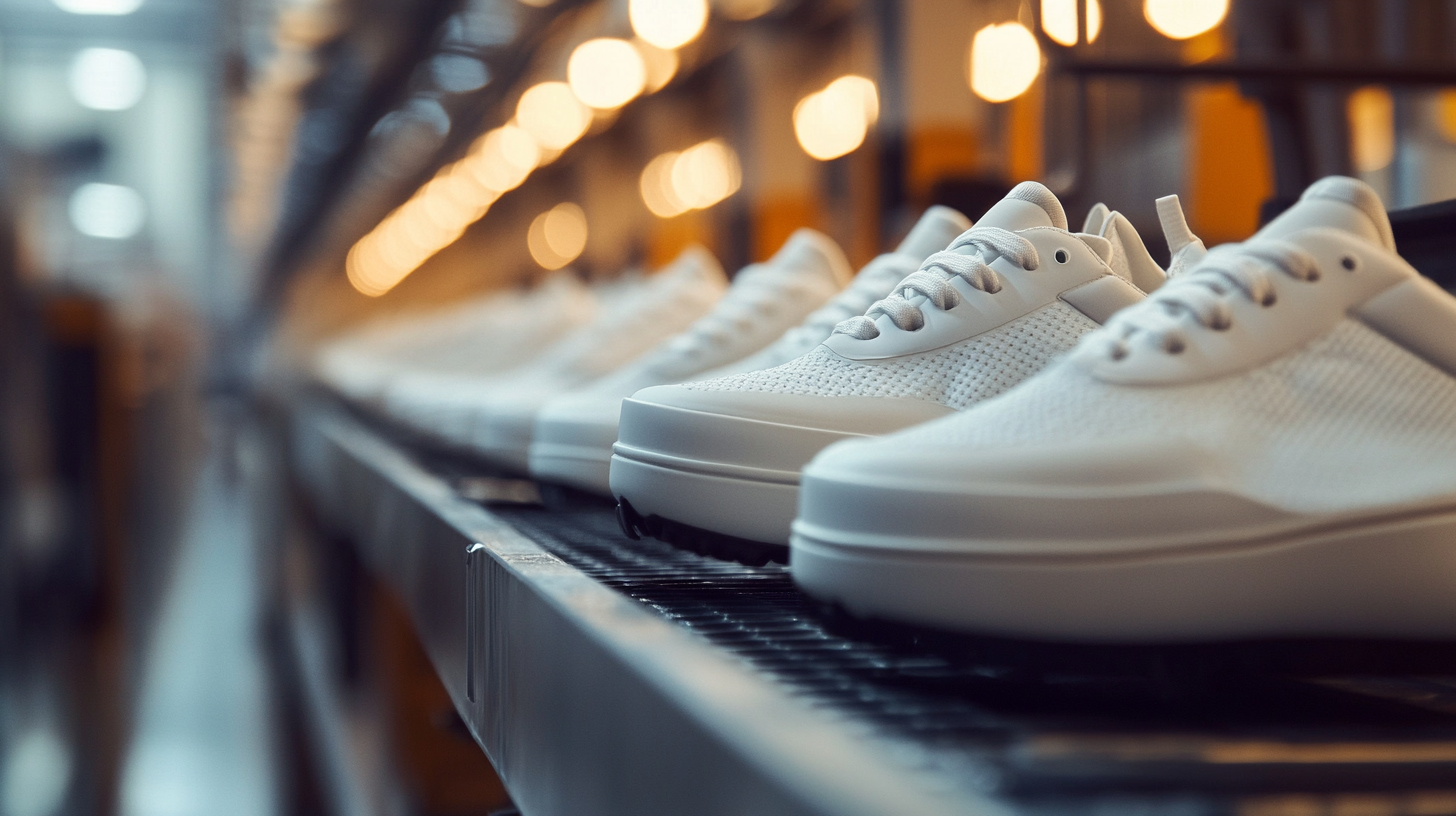
In recent years, the global market for sport shoes has witnessed unparalleled growth, with Statista projecting that the market will surpass $100 billion by 2025. This exponential rise can be attributed to increasing consumer awareness of health and fitness, driving demand for high-performance footwear that not only provides comfort but also enhances athletic performance. According to ResearchAndMarkets, the sports footwear segment is expected to grow at a compound annual growth rate (CAGR) of 5.4% from 2020 to 2027, underscoring the need for manufacturers to adhere to stringent manufacturing standards.
Understanding these manufacturing standards is crucial for both consumers and industry players, as they dictate the quality, durability, and performance of sport shoes. High-performance sport shoes are often built using advanced materials and technologies that go beyond traditional manufacturing practices. Reports from the American Apparel & Footwear Association highlight the importance of innovation in materials science, emphasizing how factors such as breathability, cushioning, and stability play a critical role in athlete performance and injury prevention. This blog delves into the intricate standards that underpin the production of sport shoes, providing insights into what truly sets high-performance footwear apart in a competitive market.

When it comes to high-performance sport shoes, manufacturing standards play a crucial role in determining not only the quality of the footwear but also its performance capabilities. These standards encompass a wide range of requirements, from materials selection to production processes, ensuring that every shoe produced meets the rigorous demands athletes place on their gear. By adhering to strict manufacturing guidelines, companies can produce shoes that offer enhanced support, durability, and comfort, all of which are vital for achieving optimal performance in competitive sports. The importance of manufacturing standards extends beyond mere compliance; they affirm a brand's commitment to quality and innovation. High-performance sport shoes must be able to withstand the stresses of intense physical activity, and this is where precise engineering comes into play. The right balance of flexibility and support is achieved through meticulous testing of materials and designs, ensuring that each pair can endure the functional demands of athletes. Moreover, these standards help to maintain consistency across product lines, providing both manufacturers and consumers with confidence in the shoes they choose. In addition to performance benefits, adhering to established manufacturing standards also addresses safety concerns. Athletes often face various environmental challenges, and high-quality footwear can provide protection against injuries. Quality control procedures during production minimize defects that could compromise the shoes’ structural integrity, thus enhancing the athletes' overall experience and performance. In a world where every fraction of a second counts, the role of manufacturing standards in producing reliable, high-performance sport shoes cannot be overstated.

The global athletic footwear market is projected to reach a staggering value of $557.6 billion in 2023, with expectations for growth to $584.0 billion in 2024 and further up to $888.0 billion by 2032. This significant expansion is fueled by a rising demand for high-performance sport shoes, which require advanced materials and innovative manufacturing techniques.
Key materials in the production of high-performance sport shoes include specialized polymers and proprietary technologies. For instance, the incorporation of polyurethane (PU) and thermoplastic polyurethane (TPU) has revolutionized safety footwear. These materials not only enhance durability but also improve comfort, allowing for better energy return and shock absorption during athletic activities. Additionally, recent advancements like the LightSpray™ technology focus on reducing carbon emissions during manufacturing, aligning with the industry's push towards sustainable practices.
Moreover, innovation is seen in multi-functional shoe materials, such as the new environmentally friendly Rhenoprint™ series. These materials are designed to optimize performance while adhering to sustainable development goals. With innovations in materials science and performance-enhancing technologies, the landscape of high-performance sport shoes continues to evolve, catering to the diverse needs of athletes while striving for sustainability.

The landscape of athletic shoe manufacturing is undergoing a significant transformation, driven by innovative technologies that are reshaping how sport shoes are designed, produced, and experienced. According to a recent report by Research and Markets, the global athletic footwear market is projected to reach $128 billion by 2025, reflecting a compound annual growth rate (CAGR) of 6.1%. This growth is largely fueled by advancements in materials science, manufacturing processes, and the integration of digital technologies.
One of the most impactful innovations is the use of 3D printing in the production of sport shoes. This technology allows for the creation of highly customized designs that can enhance performance and comfort. According to a 2022 study published in the Journal of Sports Sciences, shoes produced through 3D printing can offer a 20% weight reduction compared to traditional manufacturing methods, providing athletes with a lighter and more responsive footwear option. Additionally, brands like Adidas and Nike are leveraging 3D imaging and scanning to create shoes that conform to individual foot shapes, resulting in superior fit and performance.
Sustainability is also a driving force in the evolution of athletic shoe manufacturing. The 2021 Global Sustainability Report indicated that 52% of consumers are willing to pay more for sustainable footwear. In response to this, companies are increasingly using recycled materials and eco-friendly production techniques. For example, Nike's Move to Zero initiative aims to achieve a zero carbon and zero waste future, reflecting a broader industry trend towards sustainability while meeting consumer demand for environmentally conscious products.
Lastly, the integration of smart technology into athletic shoes has enhanced user experience and performance tracking. Footwear equipped with sensors can monitor metrics such as speed, distance, and even gait analysis, providing athletes with valuable data to improve their performance. According to a market research report from TechNavio, the smart shoe market is set to grow by USD 1.5 billion from 2021 to 2025, highlighting the increasing intersection of technology and sports footwear. These innovations are setting a new standard in athletic shoe manufacturing, promising a future where performance, customization, and sustainability coexist seamlessly.

Quality control measures are vital in the production of high-performance sport shoes, influencing both brand reputation and consumer satisfaction. In the competitive landscape of athletic footwear, ensuring the consistency and durability of materials is paramount. Manufacturers often implement rigorous testing methods, including stress tests and wear evaluations, to guarantee that shoes meet exacting performance standards. This commitment to quality reassures customers that the footwear can withstand intense physical activity while providing the necessary support and comfort.
However, weaknesses in quality control can pose significant risks to leading brands. Inadequate oversight may result in defective products, leading to customer dissatisfaction and potential safety hazards. Additionally, rapid production cycles can sometimes compromise thorough quality checks, emphasizing the need for constant vigilance in manufacturing processes. Brands must prioritize training for their quality control teams to mitigate these risks effectively.
Opportunities abound for innovation in quality control practices within the competitive landscape of sport shoe production. Emerging technologies, such as artificial intelligence and advanced analytics, can enhance monitoring systems and predict failures before they occur. Moreover, sustainability practices are increasingly influencing consumer choices, prompting brands to adopt eco-friendly materials and processes while still meeting high-performance standards.
While the market continues to grow, it is essential for brands to navigate potential threats, including rising production costs and shifting consumer preferences. Remaining adaptable and responsive to these changes will be crucial for maintaining a strong foothold in the industry. By investing in quality control measures and embracing technological advancements, brands can ensure they deliver superior products that align with customer expectations.
Environmental considerations play a crucial role in the sustainable manufacturing of sport shoes. As the demand for high-performance footwear increases, the industry faces the challenge of minimizing its ecological footprint. This shift towards sustainability involves evaluating the entire lifecycle of the product, from sourcing raw materials to the end-of-life disposal of the shoes. Innovative materials such as recycled plastics and organic cotton are now being utilized to reduce dependency on virgin resources, promoting a circular economy.
In addition to material selection, energy-efficient production processes are essential for eco-friendly sport shoe manufacturing. Brands are increasingly investing in technologies that lower energy consumption during manufacturing, such as using renewable energy sources and optimizing machinery to be more efficient. Furthermore, water management practices are also being re-evaluated to ensure that production does not excessively deplete local water sources or pollute water systems. Through these initiatives, manufacturers are not only enhancing their sustainability credentials but also appealing to a more environmentally conscious consumer base.
Consumer awareness has prompted sport shoe manufacturers to prioritize transparency in their supply chains. Brands are now more likely to disclose information regarding their environmental impact, encouraging ethical production practices throughout the industry. This commitment to sustainability, coupled with advancements in technology and innovation, represents a significant step toward a more responsible future for sport shoe manufacturing, where performance and environmental stewardship can go hand in hand.
